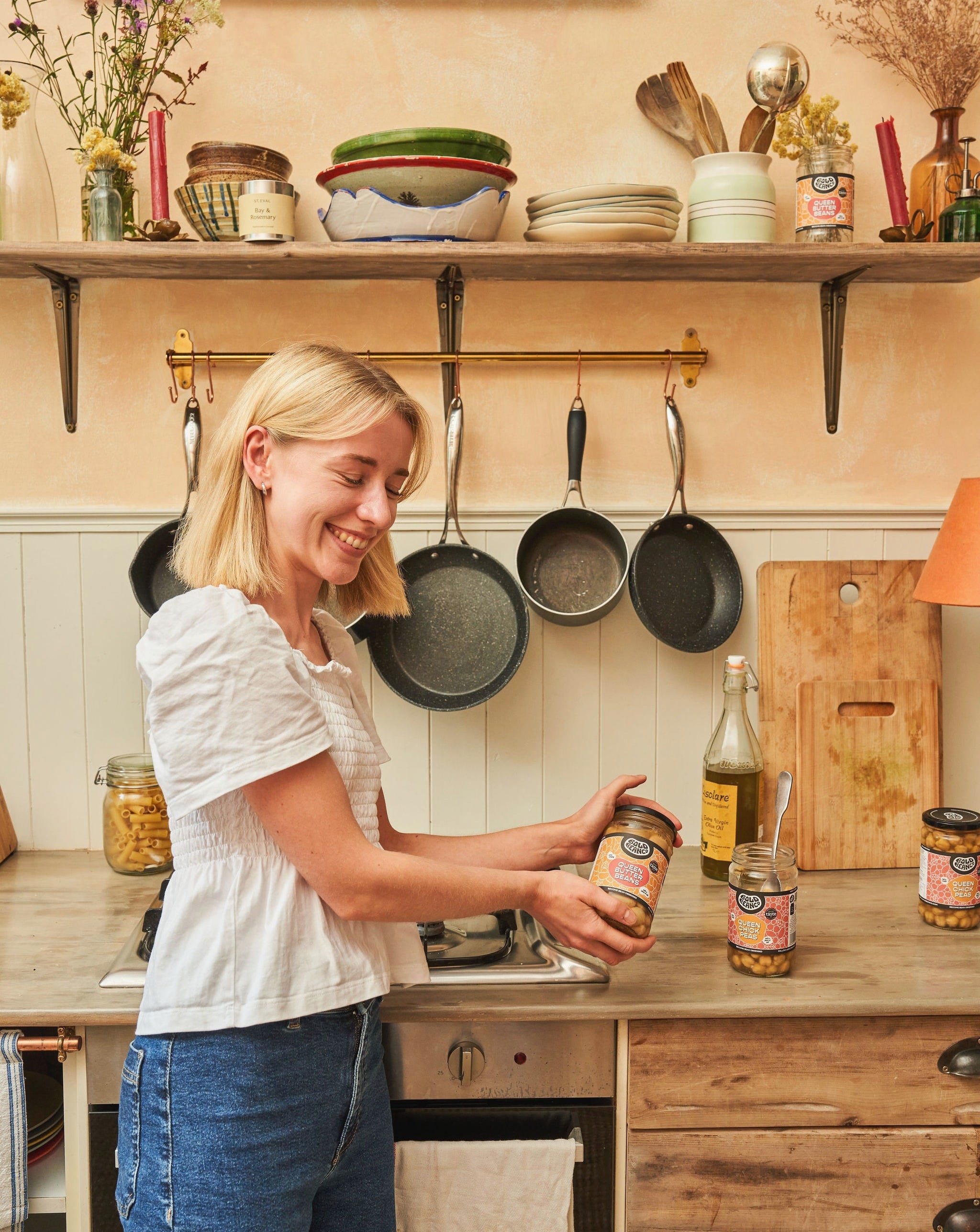Hannah Wilding is a London-based food writer, stylist, and home cook who pivoted from musical theatre to the world of food - not through a grand plan but by staying curious, open and up for giving something new a proper go. Her move from jazz hands to jars of beans - we’ll come onto that later(!) - struck a chord with people looking for a more relaxed, approachable and homely way to cook. Her style is instinctive, loose, and down to earth - more “let’s see if this works with this” rather than “follow it to the letter” - the kind of food that doesn’t demand precision, just a bit of curiosity. Through her newsletter ‘Table Read’, Hannah shares recipes from her own kitchen shaped by the seasons, along with those that come with stories - meals inspired by holidays, dinner with friends, slow weekends, or just a craving. They're not about precision or perfection - they’re about real life and making something great from what you’ve got.
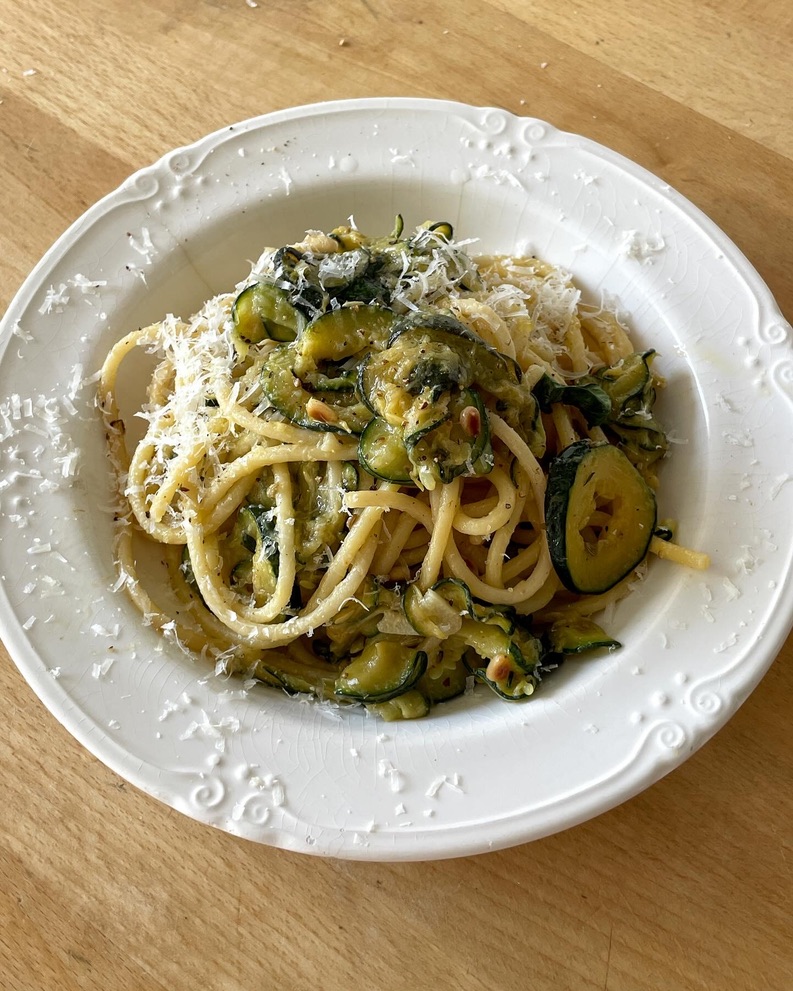
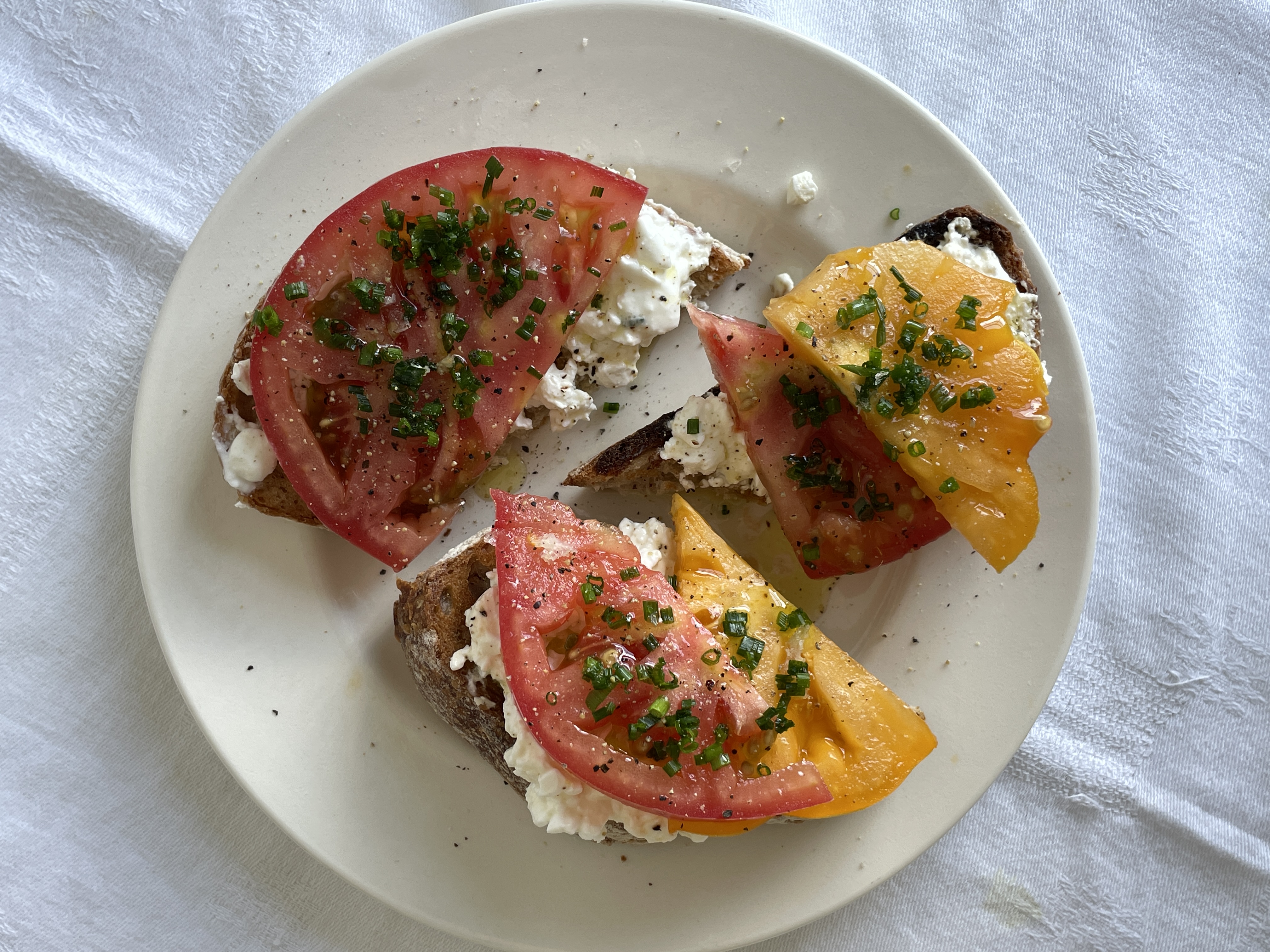
Warm, chatty, and gently encouraging, her writing invites you into the kitchen without pressure, with an element of transporting you to a moment or memory with a temptation to want to create that mood or recipe yourself. It’s not about doing it right - it’s about doing it in a way that feels right for you.
ConsiderBeyond: You describe your career as “squiggly.” What have been some of the most unexpected turns — and what did they teach you?
Hannah: Musical theatre isn’t quite the training you’d expect for a career in food - but that’s where I started. I had big dreams of the West End and a head full of harmonies. But just as I graduated - ready to leap into auditions - lockdown hit. Theatres went into blackout and I felt truly lost. Like everyone, I was looking for something to cure the boredom. For me - and I think, for many - that became cooking.
My kitchen creations made their way onto Instagram. Nothing fancy, nothing fussy, just homely food, poorly photographed oh so elegantly on my…radiator. But I think it was because of that that it resonated so well, and over time, a following began to grow. And without really meaning to, the hobby became the job. Now, food is the career, and jazz hands and tap shoes have shimmed into the hobby. It’s a switch I didn’t see coming, but one I’m very grateful for. Theatre taught me resilience. You get a lot of no’s and not so many yes’s - so you get pretty good at picking yourself up, rerouting, and staying open to something new. There can be a lot of pressure to have a plan and stick to it - but life doesn’t really work like that. When one door doesn’t open, it’s not always a no - it might just be a nudge in another direction. And sometimes, that direction ends up being the one you were meant for all along.
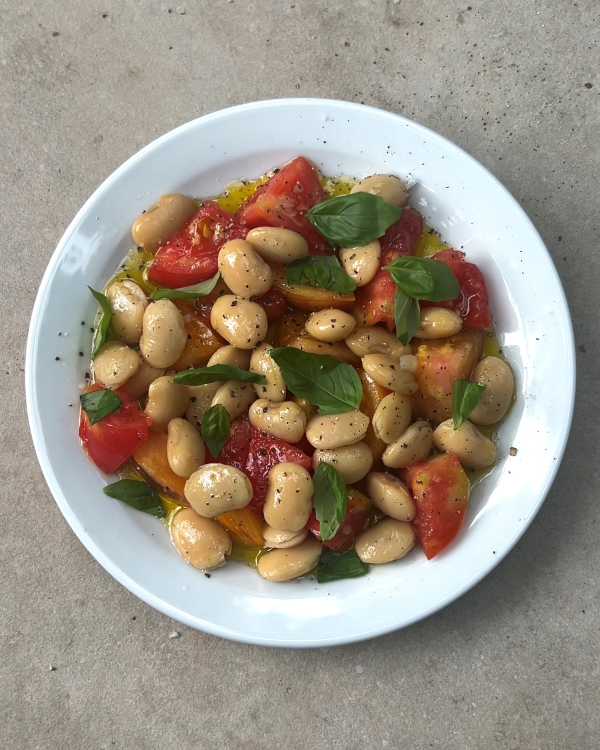
.jpg)
ConsiderBeyond: What was the moment you realized that food and storytelling could become your creative anchor?
Hannah: I’ve always loved writing and the way I cook isn’t far off - a bit of a loose plot, a strong opening, seasonal ingredients, some trusty storecupboard staples and then we see where it goes. My recipes are more like suggestions than instructions. A bit of guidance and a bit of “use what you’ve got.”
I’m not a chef - and never claim to be. I get things wrong all the time! Burnt bottoms, questionable substitutions… but half the fun is in the messing up and a way of learning, developing and discovering new creations. A lot of my recipes are inspired by real-life moments - a dish I had on holiday, a dinner at a friend's house, or just something that tastes like home. They don’t come from big techniques or fancy rules - they come from lived-in memories, cravings in the moment, giving it a go and using the most out of what you’ve got.
ConsiderBeyond: Table Read is such a thoughtful space — what do you hope readers feel after reading your newsletter?
Hannah: Like they’re chatting to a friend - ideally one who’s just handed them a spoon and said, “Here, taste this!” I’d like my newsletter to feel warm, friendly and a little transportive. Like you’ve been whisked to the market I had in mind, or to the table where that dish first came to life. I hope people feel the story behind the food, not just the steps to make it. And more than anything, I hope it gives readers the nudge to cook - but also the permission to do it their own way. As described, my recipes are loose, “off-script” and are there for inspiration, rather than being too cheffy or by-the-book (there are MANY incredible food writers out there who can give you this!). My recipes and content are more of an invitation of loose inspiration.
ConsiderBeyond: Do you remember a meal that wasn’t fancy but meant a lot?
Hannah: The beans. The bit you were waiting for? Maybe it’s cheating to even call this a meal, as it was simply just one Queen Butter Bean eaten straight from the jar. Creamy, tender, melt-in-the-mouth. Completely unassuming and utterly delicious. That first spoonful set a lot in motion. From bean recipe experiments, hard work and a few big career leaps, it eventually led me to my current 9–5 - working at Bold Bean Co. A company that took a risk on a theatre geek with a thing for legumes. So no, it wasn’t fancy. But it meant a lot, because it quietly cracked open a whole new chapter.

ConsiderBeyond: How do pantry staples like beans become part of your seasonal rhythm?
Hannah: Pantry staples are the ingredients I think are worth investing in - things like good olive oil, a jar of beans instead of the tinned ones, a slightly more expensive tin of tuna than the usual kind. They become the canvas and base layer to many seasonal ingredients. The joy of eating something is season is that it rarely needs anything else to make it sing. The ripest tomato in summer, simply drizzled with oil oil and a pinch of flaky sea salt and that's a perfect summer bite. Or courgettes, slowly cooked down with garlic, fennel seeds, in-go a jar of beans, basil, lemon and that’s a staple side dish for any fish, meat, or just perfect by itself.
ConsiderBeyond: You talk a lot about your recipes and style of cooking being “off-script”, “loose” and “guided by memories”. What draws you to that kind of approach?
Hannah: “Off-script” is a bit of a nod to my theatre roots - pardon the pun - but it’s also how I cook, and just living the joy of figuring it all out as we go. Like I said previously, I don’t claim to be a chef. I’m constantly learning - testing, trialing, figuring out what works. That’s why I lean into a looser way of cooking. The recipes I share aren’t there to be followed to the letter - they’re more like starting points, a bit of inspiration to get you going. With my recipes, if you don’t have a specific ingredient, that’s usually totally ok! Swap it out. Use a different veg, change the herb, leave something out. It’ll probably still work - or at the very least, it’ll turn into something tasty. That kind of flexibility feels way more realistic for how people actually cook at home. And for me, the best meals often come from what’s already in the fridge or cupboard, paired with a memory, a mood, or just something you’re craving right then and there.
ConsiderBeyond: Let’s talk about your kind of recipes - the ones that feel like little love letters to a mood, a moment, or a memory. Can you walk us through three?
Hannah: A dish that feels like home: pasta. Pasta will always be on the list as a request when I visit home. 9 times out of 10 we’ll also always book an Italian restaurant no matter where we’re travelling. On family holidays with just me and my parents, we’ll often order 4 mains (yes, between 3) - a pasta dish each and a pizza to share. Greedy? Yes. Encouraging smirks and nods from the waiters, we’ll take it.
.webp)

Here’s a pantry pasta I love to make that’s comforting, easy and you’re bound to have most of the ingredients in your cupboard.
Tinned tuna, tomato & fennel pasta
This is one of those recipes I can always rely on to deliver speed, comfort & big flavour. It uses just a handful of ingredients you’ve probably already got in your cupboard, and about 30 mins of your time. I’ve used 2 tins of tuna in the recipe, which is pretty generous, but not overly so. But if it’s a little too much for you, simply scale back and use one tin between two. If you’re a big fennel fan like me, add an extra teaspoon of fennel seeds. Tinned sardines or mackerel also work well. It’s easy and adaptable.
Feeds 2 | Takes 25 mins
Ingredients
2 tbsp olive oil, plus extra to finish
3 fat garlic cloves, finely sliced
1 heaped tsp fennel seeds
300g cherry tomatoes, halved
A good handful of fresh basil leaves
2 x 120g tins of good-quality tinned tuna, preferably in olive oil
150g pasta of choice - linguine, bucatani work well
Fresh rocket & lemon wedges to serve
Method
- Heat 2 tablespoons of olive oil in a pan over a medium-low heat. Add the garlic and fennel seeds and cook gently for 1-2 minutes until fragrant and start to infuse into the oil, just softening the garlic so that it doesn’t brown.
- Tip in the tomatoes with a good pinch of salt and let them slowly break down and get jammy - about 10-12 minutes, stirring occasionally. You don't want the tomatoes to totally collapse, but their juices will ooze to eventually create a sauce - make sure the heat isn’t too high as it’ll cook off all of the juices too quickly. Add the basil leaves, whole, about halfway through cooking to let them wilt into the sauce.
- While that's cooking, bring a pan of water to the boil and add a pinch of salt. Cook the pasta until al dente. Reserve a mug of starchy pasta water before draining.
- After about 10 minutes, the tomatoes should be looking all jammy and their juices should be released. This step is optional, but if you have a hand blender, roughly pulse the tomatoes to form a smoother sauce.
- Add the tuna and the oils from the tin to the tomatoes, breaking it up gently, and crack in a good amount of black pepper - adjust the seasoning with salt to your liking. If you’re using tuna just in brine or water, add a drizzle of olive oil at this point too to give it a nice glossyness.
- Add the pasta straight into the pan, along with a splash of the reserved pasta water to help it all come together. Stir everything well to coat, making sure all the sauce clings onto the pasta.
- Plate up and serve with fresh rocket, an extra drizzle of olive oil, an extra crack of black pepper and a squeeze of lemon.
A dish that takes you somewhere else:
What does one do with 24 hours in Barcelona? “You’ve gotta go for the chickpeas,” I was told. Not to check out the Sagrada Familia, cruise the Gothic Quarter or swim in the Mediterranean. No. Go for these chickpeas. And so that I did, and trawled through the cobbled streets to a tucked away, but incredibly buzzy, tapas bar called El Xampanyet. It was here I ordered Chickpea Samfaina - a Catalan dish that’s a cousin of ratatouille and caponata. They were so plump, moreish, incredibly flavoursome - I think about those chickpeas often. And so after a couple of attempts, I’ve had a go at recreating them so that you can enjoy a similar-ish experience.
The Recipe - Chickpea Samfaina
Like with most recipes, the quality of the ingredients you use will really make a difference to the overall dish. Opt for top quality chopped tomatoes, and definitely splash out on a jar of Queen Chickpeas instead of using a tin, you’ll notice a world of difference. Don’t skimp on the olive oil either.
Feeds 3-4 | Takes 35 mins
Ingredients
Olive oil - plenty of it
1 onion, finely chopped
1 aubergine, diced into 1-1.5cm thick chunks
1 red pepper, stem & seeds removed, cut into 1cm chunks
4 fat garlic cloves, finely chopped
2 tbsp tomato puree
1 x 400g tin of good quality chopped tomatoes
100ml white wine (optional)
1 x 570g jar of Queen Chickpeas with their bean stock, or other jarred chickpeas
1 tsp sweet smoked paprika
A small handful of fresh basil leaves
Serving suggestions
Grilled bread
A quick tomato & red onion salad*
Served the next day tossed through small pasta shapes
Method
Heat 3 tablespoons of olive oil in a large pan over a medium heat. Add the onions and cook for 8-10 minutes, stirring occasionally, until soft and translucent.
Add the peppers and aubergine with another good splash of oil and a good pinch of salt. Stir well to coat everything in the oil, then cook for 10-12 minutes, stirring every so often, until the peppers have softened and aubergine is starting to break down. Add a splash of water if they start to catch.
Once everything’s softened, stir in the garlic and cook for 2 minutes, just until fragrant.
Add the tomato puree, stir it through, and cook for 2 minutes until it turns a deep red. Then add the chopped tomatoes, white wine, smoked paprika and another pinch of salt. If your tomatoes are a bit sharp, add a pinch of sugar here too. Bring everything to a gentle boil, then reduce the heat and let it simmer slowly for about 10 minutes until thick and jammy.
Drain the chickpeas, reserving the bean-stock (the liquid in the jar!), and add them to the pan. Stir the chickpeas to combine into the sauce, and continue simmering for about 7-8 minutes so that they soak up all of those flavours. Gradually, you can add the bean stock if necessary to loosen the mixture, but you’re aiming for something thick but spoonable - like a vegetable-stew-meets-dip.
For the last couple of minutes, stir in the fresh basil and let it wilt into the sauce. Finish with a few cracks of black pepper.
Scoop it onto grilled bread or serve alongside a fresh tomato salad. It’s just as good the next day, served cold on toast or even tossed through pasta, particularly conchigliette or orrechiette. Always with a final drizzle of olive oil.
Perfect with - A quick tomato, red onion & kalamata olive oil salad
Thinly slice ½ a red onion and toss it with a good pinch of salt and the juice of ½ a lemon in a bowl - this’ll help soften the bite! Add 200g chopped ripe tomatoes, 50g pitted kalamata olives, halved, a splash of red wine vinegar, 3 tbsp olive oil, and a small handful of chopped parsley. Season generously with salt and black pepper, stir well, and let it sit for 10 minutes. Great with some tinned sardines too, if you like.
A dish that’s pure instinct: opening the fridge door, seeing what’s looking a little limp, or sussing out what looks juicy at the market, and pulling together what feels good. More of a “snacky plate”, if you will. In summer, it could be something as simple as a plate of cherries, manchego cheese, salted almonds and some good bread. Or jammy eggs on toast mixed with yogurt, mustard, capers and chives. Or perfectly ripe and juicy tomatoes on toast with cottage cheese, a pinch of Maldon salt and a drizzle of olive oil. Perfect lunch.
ConsiderBeyond: What’s inspiring you right now — in or outside the kitchen?
Can I say the sun is inspiring me? It inspires me to get up! To go! To say YES! And to grab that juicy tomato or ripe cherry and eat it then and there, juices trickling down my fingers.
ConsiderBeyond: What’s something you’ve learned through food that has nothing to do with cooking?
Slow. down. Why are you rushing? As much as this applies to a slow-cooked sauce, it also applies to life too. Trial, taste, test, get things wrong, learn from it, find a new direction. You’ll know when it feels right
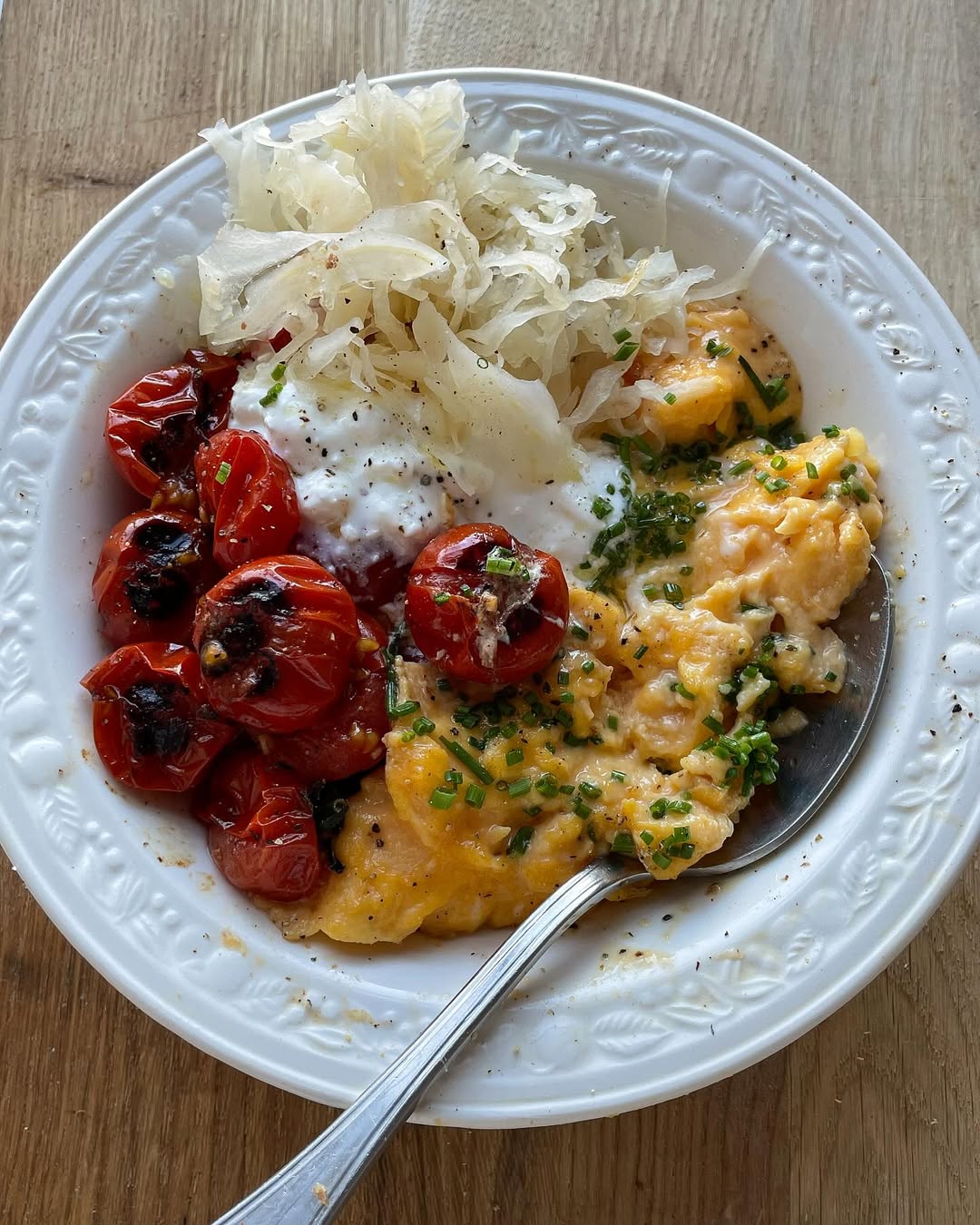
Photos by
Hannah Wilding



